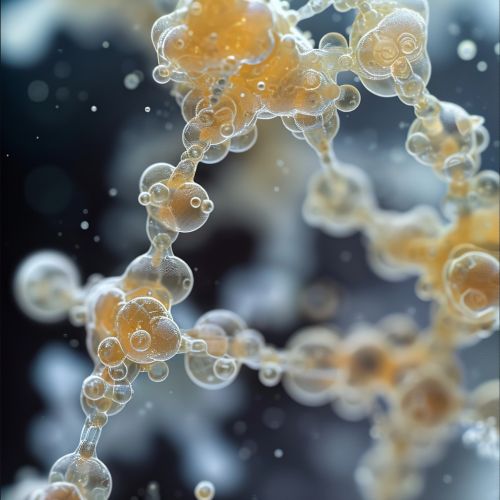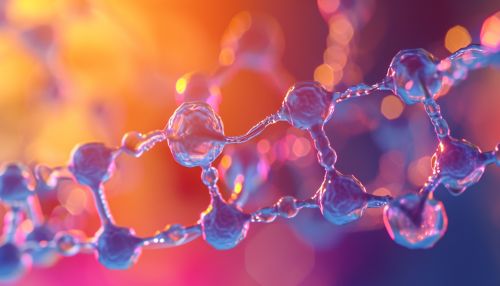Polyterpene
Introduction
Polyterpenes are a class of polymers derived from terpenes, which are naturally occurring organic compounds primarily composed of carbon and hydrogen. They are characterized by repeating isoprene (C5H8) units, with the number of repetitions varying significantly, leading to a wide range of molecular weights and properties.


Structure and Synthesis
The structure of polyterpenes is based on the isoprene rule, which states that the structure and synthesis of naturally occurring terpenes can be considered as the result of the polymerization of isoprene units. The isoprene units in polyterpenes can be linked in a "head-to-tail" manner, forming a linear, unbranched chain, or in a "head-to-head" or "tail-to-tail" manner, leading to the formation of cyclic structures.
The synthesis of polyterpenes occurs in nature through the action of enzymes known as terpene synthases. These enzymes catalyze the condensation of isoprene units to form the polyterpene backbone. The process can be replicated in the laboratory using synthetic methods, such as the cationic polymerization of myrcene, a naturally occurring monoterpene.
Types of Polyterpenes
There are several types of polyterpenes, classified based on the number of isoprene units they contain. These include:
- Monoterpenes: These are the simplest type of polyterpenes, consisting of two isoprene units. Examples include myrcene and limonene.
- Sesquiterpenes: These contain three isoprene units. Examples include farnesene and humulene.
- Diterpenes: These contain four isoprene units. Examples include phytol and vitamin A1.
- Triterpenes: These contain six isoprene units. Examples include squalene and lanosterol.
- Tetraterpenes: These contain eight isoprene units. Examples include lycopene and beta-carotene.
- Polyterpenes: These contain more than eight isoprene units. Examples include rubber and gutta-percha.
Properties and Applications
Polyterpenes exhibit a wide range of properties, depending on their molecular structure and weight. They are generally hydrophobic, owing to their carbon-rich structure, and have varying degrees of flexibility and hardness.
One of the most well-known polyterpenes is natural rubber, also known as polyisoprene. It is highly elastic and is used in a wide range of applications, including tires, gloves, and medical devices. Another important polyterpene is gutta-percha, which is rigid and nonconductive and is used in dentistry for root canal fillings.
Polyterpenes are also found in resins, such as rosin and turpentine, and are used in adhesives, paints, and varnishes. They are also used in the food industry as flavoring agents and in the pharmaceutical industry in the production of vitamins and hormones.
Environmental Impact and Sustainability
Polyterpenes are biodegradable, making them environmentally friendly alternatives to synthetic polymers. However, the extraction and processing of polyterpenes can have environmental impacts, including deforestation and pollution.
Sustainable practices in the production and use of polyterpenes are therefore crucial. This includes the sustainable harvesting of raw materials, the use of green chemistry principles in the processing of polyterpenes, and the development of recycling strategies for polyterpene-based products.
